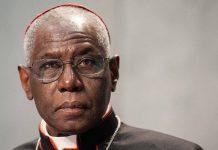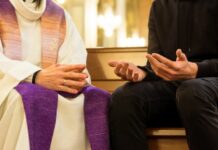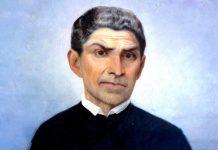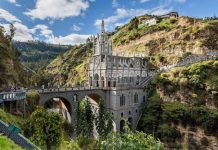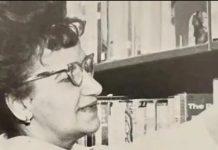Conclave is the unique name given to the gathering of the Cardinals to elect a Pope.
Newsroom (06/05/2025 02:00, Gaudium Press) The method the Catholic Church uses to select their leader has remained virtually unchanged for the last 800 years. The term conclave is Latin for “locked room”. (Latin cum, with, and clavis, key; a place that may be securely closed)
History of the Conclave
In 1271 the election that ended with the choice of Gregory X at Viterbo had lasted over two years and nine months when the local authorities, weary of the delay, shut up the cardinals within narrow limits and thus hastened the desired election.
The new pope endeavored to obviate for the future such scandalous delay by the law of the conclave, which, almost in spite of the cardinals, he promulgated at the fifth session of the Second Council of Lyons in 1274.
The provisions of his Constitution “Ubi Periculum” were stringent. When a pope died, the cardinals with him were to wait ten days for their absent brethren. Then, each with a single servant, lay or cleric, they were to assemble in the palace where the pope was at his death, or, if that were impossible, the nearest city not under interdict, in the bishop’s house or some other suitable place.
All were to assemble in one room (conclave), without partition or hanging, and live in common. This room and another retired chamber, to which they might go freely, were to be so closed in that no one could go in or out unobserved, nor anyone from without speak secretly with any cardinal. No cardinal might send out any message, whether verbal or written, under pain of excommunication.
There was to be a window through which food could be admitted. If after three days the cardinals did not arrive at a decision, they were to receive for the next five days only one dish at their noon and evening meals. If these five days elapsed without an election, only bread, wine, and water should be their fare. During the election they might receive nothing from the papal treasury, nor introduce any other business unless some urgent necessity arose imperiling the Church or its possessions. If any cardinal neglected to enter, or left the enclosure for any reason other than sickness, the election was to go on without him.
But his health restored, he might re-enter the conclave and take up the business where he found it. The rulers of the city where the conclave was held should see to it that all the papal prescriptions concerning enclosure of the cardinals were observed. Those who disregarded the laws of the conclave or tampered with its liberty, besides incurring other punishments, were ipso facto excommunicated.
Modern Day Conclave
The Cardinal Electors, as they are known, along with certain assistants, are sequestered away from any contact with the outside world, in living quarters inside Vatican City. The secrecy of the Conclave is absolute, even from other Cardinals not themselves Electors. Only a Pope can grant the faculty of discussing the Conclave with anyone not present.
Cardinal Electors who have been legitimately delayed, or who leave for a reason recognized in law, may enter, or re-enter, the Conclave while it is in progress. The judgment regarding whether the reason is legitimate rests with the majority of the Cardinal Electors who are present.
From the time of the vacancy of the Apostolic See until the beginning of the Conclave, no less than 15 full days, and no more than 20, may elapse. This means that the Conclave may begin no earlier than the 16th Day of the Interregnum, nor start later than the 21st Day.
To begin the process, there is a special morning mass, after which the 120 Cardinals of voting age would gather inside the exquisitely decorated Sistine Chapel – home of all the Papal Conclaves since 1858.
In the afternoon the Cardinal Electors gather in the Pauline Chapel of the Apostolic Palace. Invoking the assistance of the Holy Spirit with the Veni Creator Spiritu, they process to the Sistine Chapel. There they take a solemn oath to observe the prescriptions of the law governing the election, to observe the secrecy obliged, to not assist any secular power which may try to influence the election, and if elected to faithfully carry out the Petrine Office, and to protect the spiritual and temporal rights of the Holy See.
After the last Cardinal Elector has taken the oath, the Master of Papal Liturgical ceremonies gives the order Extra omnes, commanding everyone not authorized to remain to leave the Chapel. Besides the Electors, only the Master of Papal Liturgical Ceremonies and the ecclesiastic chosen to give a meditation to the Cardinals on the seriousness of their duties, remains. When the meditation has been concluded, both of these men depart the Sistine Chapel.
After the Cardinals recite prayers provided in the proper Ordo for the Conclave, the Cardinal Dean inquiries if any Electors have questions concerning the norms and procedures. Once these are clarified, if a majority of the Cardinals agree the election can begin.
There is no guarantee that the first round of voting will be revealed the same day. Through a mixture of speeches, prayer, reflection – and intense political jostling – Cardinals whittle down candidates through successive rounds of voting.
Voting Process
Each cardinal writes his choice on a paper inscribed with the Latin words for “I elect as supreme pontiff.” They approach the altar one by one and say: “I call as my witness, Christ the Lord who will be my judge, that my vote is given to the one who, before God, I think should be elected.” The folded ballot is placed on a round plate and slid into an oval silver-gold urn.
After all ballots are in, including those brought from the sick by the Infirmari, the 1st Scrutineer shakes the receptacle several times to mix the ballots. Then the 3rd Scrutineer counts them, placing them in a second, empty, receptacle. If the number of ballots does not equal the number of electors, they are burned, and a second vote taken immediately. Otherwise, the Scrutineers proceed to tabulate the vote.
Sitting at a table in front of the altar, the 1st Scrutineer silently reads the name on a ballot, passes it to the 2nd Scrutineer who does likewise, and then passes it to the 3rd Scrutineer, who reads the name aloud and then writes it down. Each Elector also writes it down on a sheet provided for this purpose. The ballot is then pierced with a needle and placed on a thread for security.
When all ballots have been read the Scrutineers tabulate the vote by individuals receiving votes. They do this on a separate sheet of paper from that on which they were first listed. The Revisers then verify the results. If two-thirds of the votes have been cast for the same person an election has occurred. In which case, the Scrutineers, with the assistance of the Secretary of the Conclave and the Masters of Ceremony, who are re-admitted to the Conclave at this point, proceed to burn the ballots.
However, if no election occurred and it was the first ballot of the session they proceed to vote again. After the second ballot the ballots of both sessions are burned, whether an election occurred or not.
Only one ballot is held on the first day, with up to four rounds of voting allowed each day after that. A two-thirds majority is needed to win.
What Happens when there is an Election
After the junior Cardinal Deacon has re-admitted the Secretary of the College and the Master of Papal Liturgical Ceremonies, the Cardinal Dean, or, the Cardinal who is first in order and seniority, goes to the one elected and asks,
Do You Accept Your Canonical Election as Supreme Pontiff?
With consent he becomes Bishop of Rome and Pope. The Cardinal Dean then asks,
By What Name Do You Wish to be Called?
The Master of Papal Liturgical Ceremonies, with the witness of the two Masters of Ceremonies (who are now summoned), draw up a document certifying the consent of the one elected and the name he has chosen.
Following certain formalities prescribed in the ritual for the Conclave, each Cardinal comes forward in turn and makes an act of homage and obedience to the new Pope. An act of thanksgiving is then made. Following the vesting of the Pope the senior Cardinal Deacon announces from the loggia of St. Peter’s to those gathered in the Square that we have a Pope (Habemus papam) and what name he has taken. The newly elected Pope then comes out to address and bless the City and the World (Urbi et Orbi).
White or Black Smoke
The ballot itself is secret and was introduced on 1621 by Gregory XV to try and avoid overt politicking but the Conclave is inevitably a hotbed of competing factions who wish to see their man come out on top. During each ballot Cardinals write the name of their choice, ideally in distorted handwriting to disguise their identity.
If any ballot produces an election those ballots are burned in a stove set up in the Sistine Chapel together with a chemical which produces a white smoke. This signals to Rome and the World that a Pope has been elected.
If, however, the first vote of a session does not produce an election they proceed to a second vote. If that, too, fails to elect a Pope, the ballots of both votes are burned with wet straw, producing black smoke.
– Raju Hasmukh






